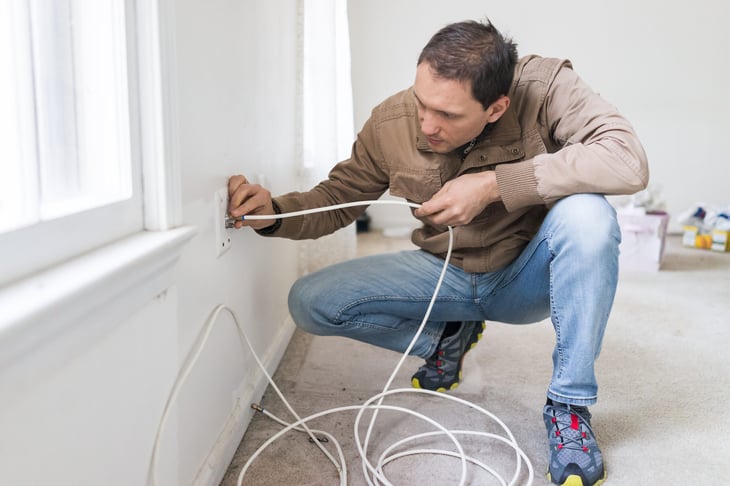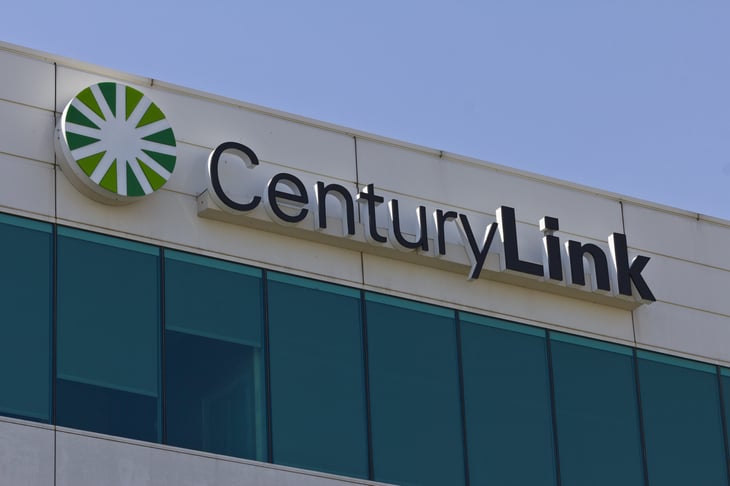
Editor's Note: This story comes from CableTV.com.
Internet service isn’t usually cheap. Sure, we know some plans that start at $19.99 per month, but we’ve also seen internet bills as large as $499.95 per month.
While the average price for internet is around $50 per month, your costs will vary based on speed, internet technology type, and —of course — internet provider.
We’ll walk you through how much you should expect to pay for internet and Wi-Fi equipment, as well as how to snag some cheap deals.
How much is internet based on speed?

Here’s a quick overview of speed tiers, speed ranges, price ranges, and average prices.
- Starting: 25–200 Mbps, $19.99–$89.95/mo., $44.84/mo.
- Intermediate: 250–800 Mbps, $35.00–$99.99/mo., $58.60/mo.
- Gig: 940–1,200 Mbps, $50.00–$125.00/mo., $78.49/mo.
What to know about internet speed

Even within a small speed range, internet prices vary wildly. We’ll cover why that is in the following, but for now, let’s just soak in the costs you can expect for different internet speed ranges.
If we lived in a fair and just world, no one would price the bare minimum for high-speed internet service, 25 Mbps, at $55 per month — the same price as a 940 Mbps plan in another part of the U.S.
But internet service providers price their internet plans as they please.
Before you sign up for a new internet plan, we recommend checking its speeds against the previous list.
If the plan costs close to the average price, you’re getting a fair shake. If it’s on the low end of the price range, you’re making out like a bandit.
And if you’re staring at the top of the price range, we hope you’ve got a competing internet provider in your area offering lower prices.
How much is internet by technology type?

Let’s look at internet technology types, speed ranges, price ranges, and average prices.
- Fiber internet: 100–5,000 Mbps, $20.00–$499.95/mo., $81.90/mo.
- Cable internet: 25–1,000 Mbps, $19.99–$125.00/mo., $53.78/mo.
- DSL internet: 6–115 Mbps, $32.99–$74.99/mo., $48.65/mo.
- Satellite internet: 12–100 Mbps, $30.00–$150.00/mo., $86.33/mo.
- Fixed-wireless internet: 10–50 Mbps, $34.95–$99.95/mo., $61.38/mo.
What to know about internet technology types

In terms of speed to dollars, you can get a lot more bang for your buck with cable and fiber internet.
Some providers might gouge you with high prices, but you can probably get fiber internet speeds of at least 100 Mbps without sacrificing an arm and a leg.
DSL is a toss-up — many providers charge a flat rate for DSL internet plans, and the speeds you get depend on the state of the network in your area.
Your $50 per month plan could get you download speeds up to 100 Mbps — or 6 Mbps. Yikes.
Satellite and fixed-wireless internet are excellent solutions for rural internet users. But these specialized technology types take a bunch of cash to run, and neither serves up the same high speeds as fiber infrastructure.
We recommend sticking with fiber or cable internet if that’s an option for you.
How much does internet price increase after a promotional period?

After the first year or two with an internet provider, you’ll probably see your internet bill raise another $10 to $35 a month.
Internet providers use promotional periods to bring in new customers at a low price in exchange for a year-long agreement. Luckily for your wallet, these promo periods are usually the same length as your internet service contract.
Once your contract period is up, you’re free to leave your provider without penalty — which may be the right move if the price increase is more than you’re comfortable with.
If you want the most competitive prices, this is the perfect time to look for a new internet service provider.
Or you can reach out to your internet provider to sign a new contract — promising to stick around for another year will usually reduce your monthly bill.
Who has the cheapest and best internet service?

CenturyLink is our pick for the best cheap internet provider. Its fiber and DSL plans are affordable and don’t come with contracts or price increases after your first year of service.
Local internet providers are often a great place to look for deals.
There are too many out there for us to name, but we’ve reviewed MetroNet and Midco if you’d like to check out other midwestern options.
For affordable options, you can find across the U.S., consider Xfinity and Verizon Fios and check out our article on the best cheap internet packages.
Will the government pay for my internet?

If you’re part of a low-income household, you might qualify for Lifeline FCC internet subsidy, which offers $9.25 per month off internet or up to $34.25 off if you live on tribal lands.
To learn more about the Lifeline program and other low-income internet solutions, see “Free and Low-Income Internet Plans.”
How much does Wi-Fi cost per month?

In addition to the $50 or so per month your internet service provider charges for internet access, you may have to pay around $10 per month to rent a Wi-Fi router.
We know — you’re already paying a lot. But very few internet providers include the cost of your internet equipment in their advertised prices. Instead, they tack the Wi-Fi equipment rental on as a hidden fee.
To learn more about what makes Wi-Fi different from internet service, check out our home Wi-Fi guide.
What’s the cheapest way to get Wi-Fi?

If you have cable internet, there’s a good chance you can buy your own modem and router to work with your internet service.
It costs a bit more upfront, but you’ll see savings over time — and you might get a stronger Wi-Fi connection than your provider offers.
The first step to saving on Wi-Fi is learning about the internet equipment you’ll need to buy, so check out our modem and router guide.
And if you don’t have cable internet, there’s not much you can do. Other service types may have a few third-party device options, but they’re usually expensive and unreliable.
If you’ve got fiber or DSL, just stick with the modem and router your internet service provider rents out.
Final take

Although internet plans average about $50 per month, you can expect to pay more or less depending on what speeds you get, what internet technology your provider uses, and whether you live in a city or rural area.
If your current internet provider seems to be charging you too much, this is a great time to check what other internet providers offer services in your area.
Methodology

We pulled from 204 internet-only plans from 24 major internet service providers (ISPs) across the U.S. for the data in this article.
We created the speed tiers based on the trends we saw in prices and speeds among these plans.
There are over 1,000 ISPs in the U.S., so we recognize these prices and speeds won’t apply to all of them, but these significant providers’ prices are a good touchstone for the various local providers you’ll run into.
To learn more about CableTV.com methodologies, head over to our How We Rank page.





Add a Comment
Our Policy: We welcome relevant and respectful comments in order to foster healthy and informative discussions. All other comments may be removed. Comments with links are automatically held for moderation.